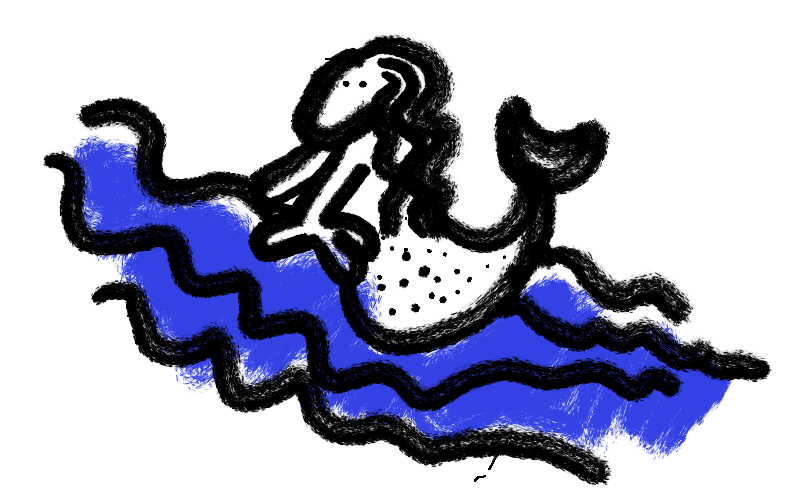

At this stage, we look for the focus of the metaphor, that is, the word, or expression, that makes something a metaphor, meaning it is not used in a literal sense.
In the case of “Mermaids riding on the waves,” the focus is “riding on,” because this word is not used in its direct, literal meaning.
In the case of “Light cutting through the night,” the focus is “cutting through,” since this expression is also used non-literally.
This is the stage where we want to understand what the metaphor is trying to convey — what action or situation it describes. We can ask questions such as: “Why was this metaphor used?”; “How does it help us process or interpret the text?”
In the case of “Mermaids riding on the waves,” the idea is that the mermaids ride on the waves in the same way one can ride, for example, a horse.
In the case of “Light cutting through the night,” the idea is that light cuts through the night like a sharp object.
In this step, we look for a fuller, more comprehensive analogy. We try to reconstruct the original intention of the metaphor to see a more complete picture and uncover its deeper meaning (Miller, 1993). We build on what we discovered in step 2 and look for the simplest and most probable interpretations.
In the case of “Mermaids riding on the waves,” the mermaids ride the waves like riders ride horses.
In the case of “Light cutting through the night,” the light cuts through the night as a knife cuts through a cake.
Based on Miller’s notation:
∃F ∃G {SIM [F(x), G(y)]},
we differentiate between source and target domains.
F() represents the function of the target domain, meaning how we imagine the object that is being trying to be understood by the tools of metaphor.
In the case of “Mermaids riding on the waves,” F(x), where x is "Mermaids on the waves": F(x) = graceful, whimsical
In the case of “Light cutting through the night” F(x), where x is "Lights in the night": F(x) = impactful, strong
G() represents the function of source domain, so what are the characteristics of the word or phrase we have identified as the focus of our metaphor.
In the case of “Mermaids riding on the waves” G(y), where y is "Riders/cowboys riding their horses": G(y) = powerful, stable
In the case of “Light cutting through the night” G(y), where y is "Knife cutting through a cake": G(y) = determined, powerful
In the last step we conduct a precise analysis of the whole metaphor, based on our previous explorations. We identify objects, acitivies and their characteristics, then translate them to the certain domain.
In the case of “Mermaids riding on the waves”:
Mermaids -> riders
waves -> horses/(other creatures that one can ride on)
movement -> they are riding in certain direction
In the case of “Light cutting through the night”:
Light -> a knife/sharp object
the night -> something you can easily cut through, e.g. cake
movement -> cutting action
You've successfully created the conceptual mapping for your metaphor.
Lakoff, G., & Johnson, M. (1981). Metaphors we live by. University of Chicago Press.
Steen, G. J. (2011, June). From linguistic to conceptual metaphor in five steps. In Metaphor in cognitive linguistics: Selected papers from the 5th International Cognitive Linguistics Conference, Amsterdam, 1997 (pp. 57-78). John Benjamins Publishing Company.